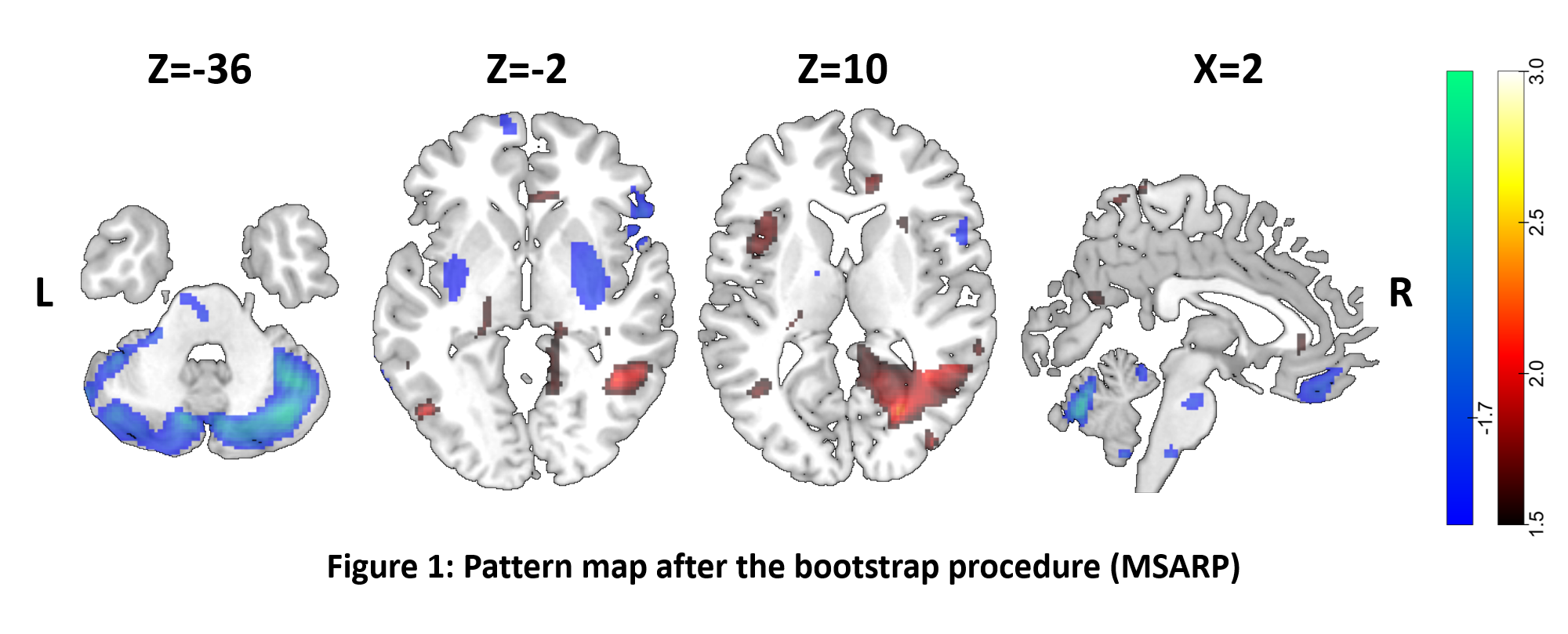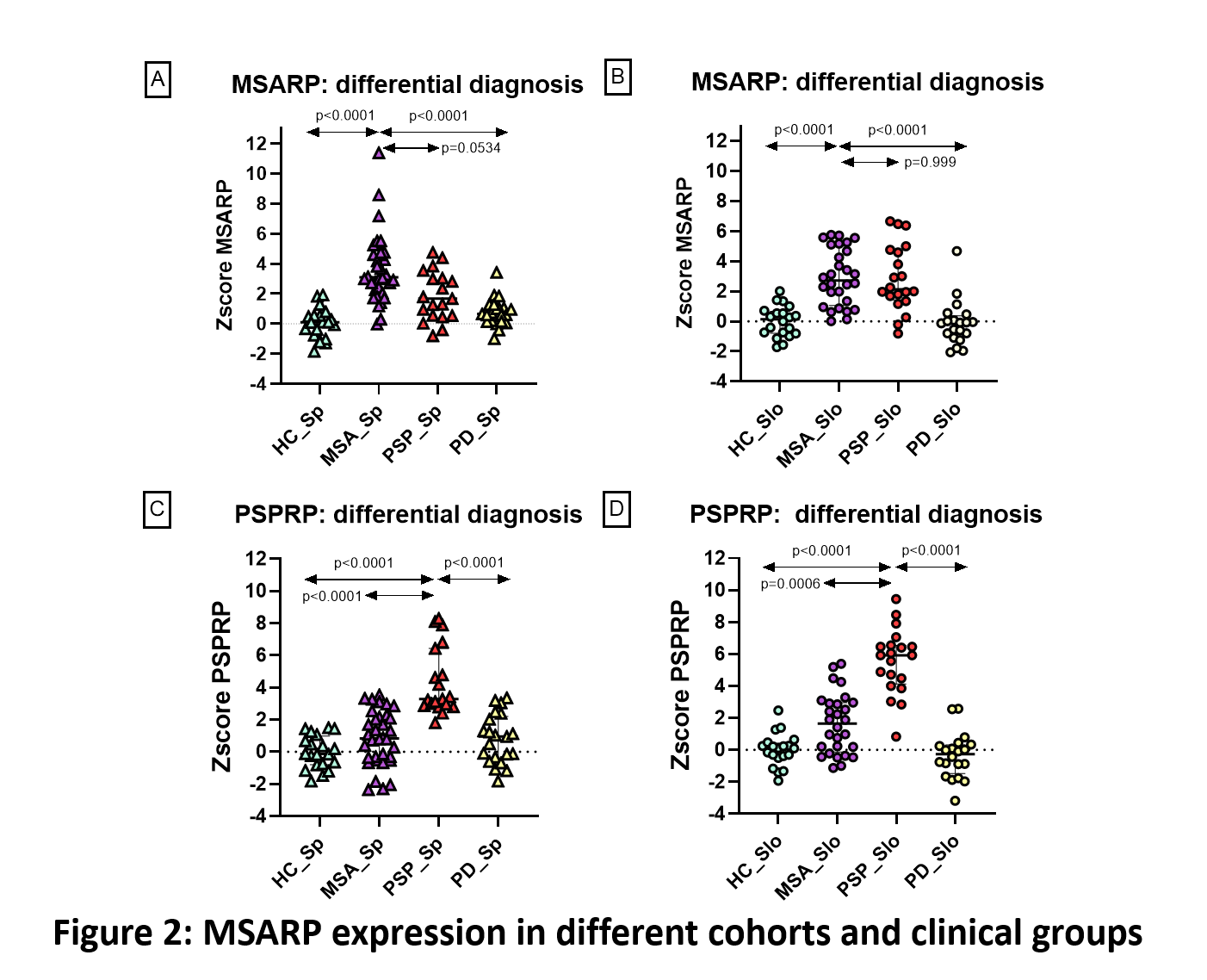Category: Neuroimaging (Non-PD)
Objective: To define and cross-validate the brain glucose metabolic abnormalities in patients with a clinical diagnosis of Multiple System Atrophy (MSA).
Background: Despite the availability of consensus criteria for clinical diagnosis and the recent research advances, the diagnostic accuracy of MSA remains sub-optimal. Accurate and earlier recognition of MSA is desirable due to the negative implications of misdiagnosis.
Method: We performed a retrospective, multicentre cohort study on 62 MSA patients who were scanned by brain FDG-PET: cerebellar (MSA-C, n=16) and parkinsonian variants (MSA-P, n=46). We included 40 healthy subjects (HC), 21 Parkinson’s disease (PD) and 39 Progressive Supranuclear Palsy (PSP) patients as reference groups. We applied a multivariate analysis (Scaled Subprofile Model/Principal components) to identify a MSA related pattern (MSARP) (MSA n=20, HC n=20) and then cross-validated in independent populations at the individual level. We performed a bootstrap resampling procedure to visually assess the reliable regions associated to the MSARP. Moreover, we compared MSARP expression in other neurodegenerative parkinsonism and the PSPRP expression (pattern predefined in an independent study) across the different clinical groups (Kruskal Wallis test corrected by Bonferroni method).
Results: Demographic and clinical data of MSA patients are summarized in table 1. The MSARP obtained showed a relative hypometabolism in cerebellum, pons and putamen and a relative hypermetabolism in parietooccipital cortex (figure 1). Compared to HC, the MSARP showed optimal diagnostic accuracy in both identification and cross-validation populations (Spanish and Slovenian cohorts, table 2). The MSA patients showed a higher expression of MSARP than PD and HC (p<0.0001) (Figure 2A-2B), however it was not significantly higher compared with PSP (Spanish cohort p=0.0534, Slovenian cohort p=0.999). However, the PSP patients showed significantly higher PSPRP expression than the rest of clinical groups and HC (Spanish cohort p<0.0001, Slovenian cohort p=0.0006, figure 2C-2D).
Conclusion: The patterns of glucose metabolism assessed by FDG-PET could be a useful and reproducible biomarker for the differential diagnosis of neurodegenerative parkinsonism. In our study, the MSARP shows an optimal accuracy to distinguish atypical parkinsonism from PD and HC. Moreover, the PSPRP provides complementary information for differentiating PSP from MSA, PD, and HC.
To cite this abstract in AMA style:
G. Martí-Andrés, M. Perovnik, E. Rebec, P. Tomše, E. Prieto, T. Rus, L. Armengou-García, L. Ležaić, M. Riverol, R. Valentí, M.R Luquin, M. Trošt, J. Arbizu. Abnormal pattern of brain glucose metabolism in multiple system atrophy [abstract]. Mov Disord. 2020; 35 (suppl 1). https://www.mdsabstracts.org/abstract/abnormal-pattern-of-brain-glucose-metabolism-in-multiple-system-atrophy/. Accessed April 21, 2025.« Back to MDS Virtual Congress 2020
MDS Abstracts - https://www.mdsabstracts.org/abstract/abnormal-pattern-of-brain-glucose-metabolism-in-multiple-system-atrophy/




